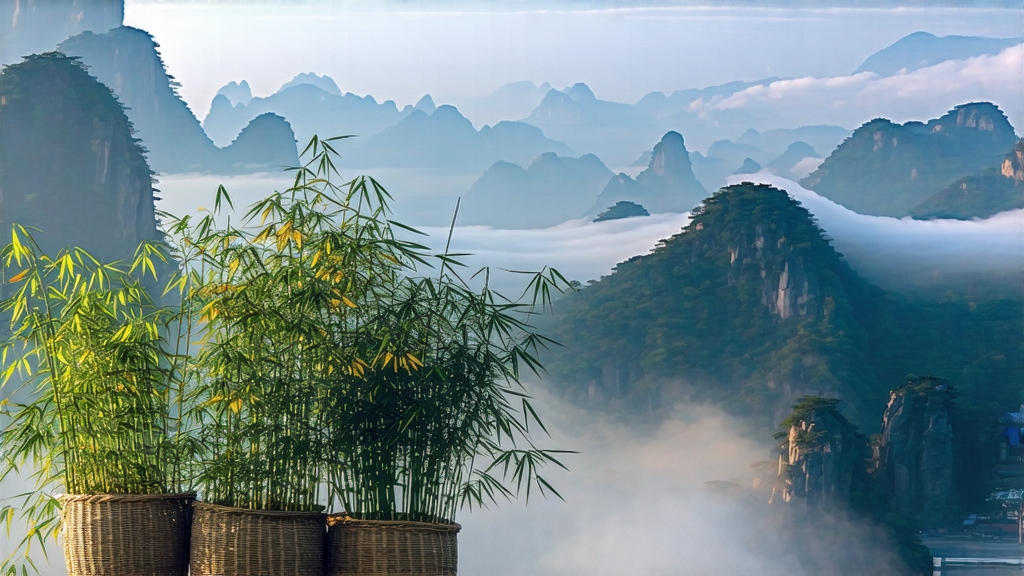
Tucked high in the mist-veiled Dabie Mountains of western Anhui Province, Huoshan Huangya has quietly embodied the elegance of China’s rarest tea category for more than fourteen centuries. While green tea commands global fame and pu-erh enjoys cult status, yellow tea—huang cha—remains a whispered legend even inside China. Among the fewer than ten authentic yellow teas still produced, Huoshan Huangya is the most venerable, the only one ever listed as an imperial tribute during the Ming Dynasty, and the variety whose very name translates as “Huoshan Yellow Bud.” To understand it is to step into a world where time, temperature and terroir are choreographed to turn the green of spring into the gold of history.
Historical tapestry
The first written record appears in the Shennong Bencaojing of the Han era, but credible tribute documentation begins in 1602 when the Wanli Emperor accepted 300 liang (roughly 18 kg) of “Huoshan Yellow” as tax in tea. Caravan routes carried it south to Nanjing and north to Beijing, wrapped in oiled paper and bamboo sheaths, arriving with the aroma of pine smoke and mountain orchid still clinging to the leaf. By the late Qing the tea had all but vanished; the last court order was filled in 1903, and the craft went dormant for nearly eighty years. A 1972 government restoration project located three octogenarian masters who still remembered the “men huang” pile-fermentation technique, and from a scant 0.8 mu (540 m²) of heritage garden the revival began. Today fewer than 180 farming households are licensed to sell true Huoshan Huangya, producing perhaps 3.5 metric tons a year—less than one day’s output of a single Fujian oolong factory.
Terroir and cultivar
The micro-basin of the Huoshan valley traps cloud cover that shortens daily sunlight by roughly one hour compared with the plains below. Diurnal swings of 12–15 °C slow amino-acid breakdown, concentrating L-theanine and glutamic acid, which translate into the tea’s hallmark umami-laced sweetness. Soils are yellow-brown laterite rich in illite clay, pH 5.2–5.6, providing a steady but moderate supply of manganese and zinc—trace elements linked to the synthesis of floral volatiles. Only two seed-propagated landraces are recognised for authentic Huangya: the local “Jin Ji Zhong” (Golden Chicken Heart) and “Xiao Ye Zhong” (Small-Leaf Bush). Both exhibit unusually high catechin-3-gallate levels, a chemical precondition for the yellowing enzymatic cascade that follows.
Plucking calendar
The picking window opens on the first day after Grain Rain (usually 20 April) and closes on the eve of Start of Summer (5 May). Two leaves and a bud, still folded like a dove’s wing, must measure 22–28 mm in length; shorter shoots lack fragrance, longer ones carry rough fibre. Experienced pickers finish before 09:30, when leaf temperature is below 18 °C, preventing field oxidation that would later sabotage the yellowing step. Each kilogram of fresh leaf contains roughly 9,000 sets of shoots—enough to yield 200 g of finished tea, a 4.5:1 ratio that is far lower than the 5.5:1 typical for Dragon Well.
Craft: the alchemy of “men huang”
Yellow tea’s identity rests on a unique smother-fermentation stage inserted between killing-green and rolling. In Huoshan this is called men huang—literally “sealed yellowing.”
- Sha Qing (Kill-green): 220 °C drum roasters for 3 min 20 s reduce moisture from 76 % to 58 % and inactivate 95 % of polyphenol oxidase. The leaf emerges jade-green, edges slightly blistered, emitting a faint baked-bean aroma.
- Re-wrap Pile: the hot leaf is immediately piled 8 cm deep in linen bags and transferred to a humidity-controlled cedar closet at 32 °C and 78 % RH. For the next 6–8 h the leaf suffocates, re-absorbing its own respired CO₂ and water vapour. Chlorophyll degrades to pheophytin, catechins dimerise into theaflavins, and a yellow-green hue emerges.
- Primary Roll: light